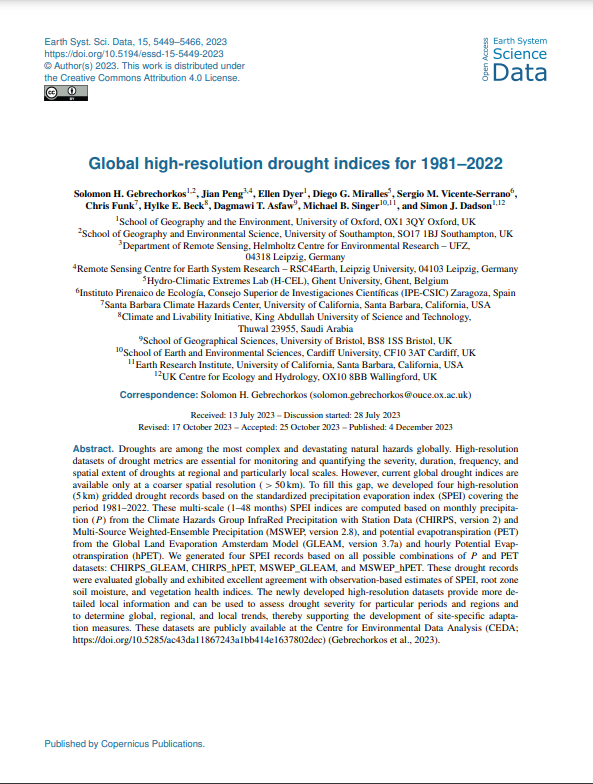Solomon H. Gebrechorkos, Jian Peng, Ellen Dyer, Diego G. Miralles, Sergio M. Vicente-Serrano, Chris Funk, Hylke E. Beck, Dagmawi T. Asfaw, Michael B. Singer, and Simon J. Dadson
Droughts are among the most complex and devastating natural hazards globally. High-resolution datasets of drought metrics are essential for monitoring and quantifying the severity, duration, frequency, and spatial extent of droughts at regional and particularly local scales. However, current global drought indices are available only at a coarser spatial resolution ( > 50 km). To fill this gap, we developed four high-resolution (5 km) gridded drought records based on the standardized precipitation evaporation index (SPEI) covering the period 1981–2022. These multi-scale (1–48 months) SPEI indices are computed based on monthly precipitation (P) from the Climate Hazards Group InfraRed Precipitation with Station Data (CHIRPS, version 2) and Multi-Source Weighted-Ensemble Precipitation (MSWEP, version 2.8), and potential evapotranspiration (PET) from the Global Land Evaporation Amsterdam Model (GLEAM, version 3.7a) and hourly Potential Evapotranspiration (hPET). We generated four SPEI records based on all possible combinations of P and PET datasets: CHIRPS_GLEAM, CHIRPS_hPET, MSWEP_GLEAM, and MSWEP_hPET. These drought records were evaluated globally and exhibited excellent agreement with observation-based estimates of SPEI, root zone soil moisture, and vegetation health indices. The newly developed high-resolution datasets provide more detailed local information and can be used to assess drought severity for particular periods and regions and to determine global, regional, and local trends, thereby supporting the development of site-specific adaptation measures. These datasets are publicly available at the Centre for Environmental Data Analysis (CEDA; https://doi.org/10.5285/ac43da11867243a1bb414e1637802dec) (Gebrechorkos et al., 2023).

